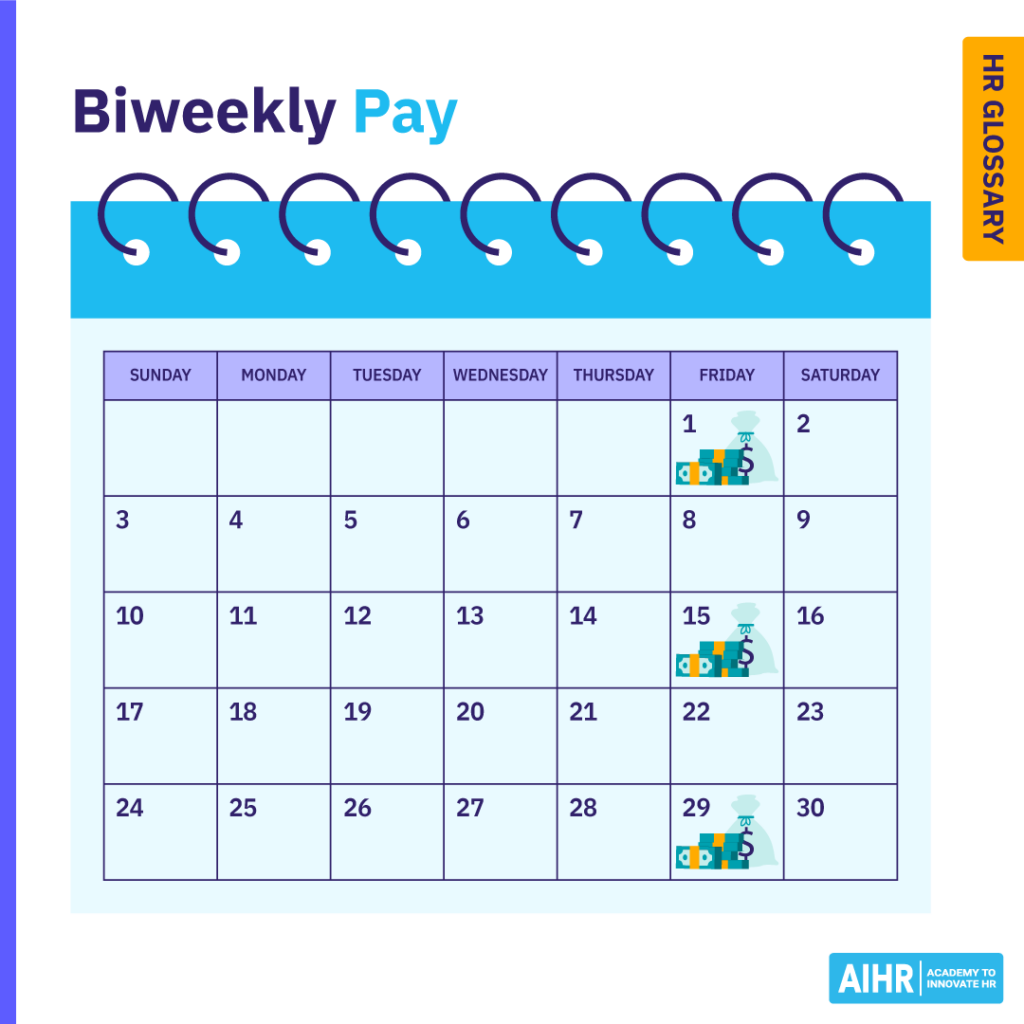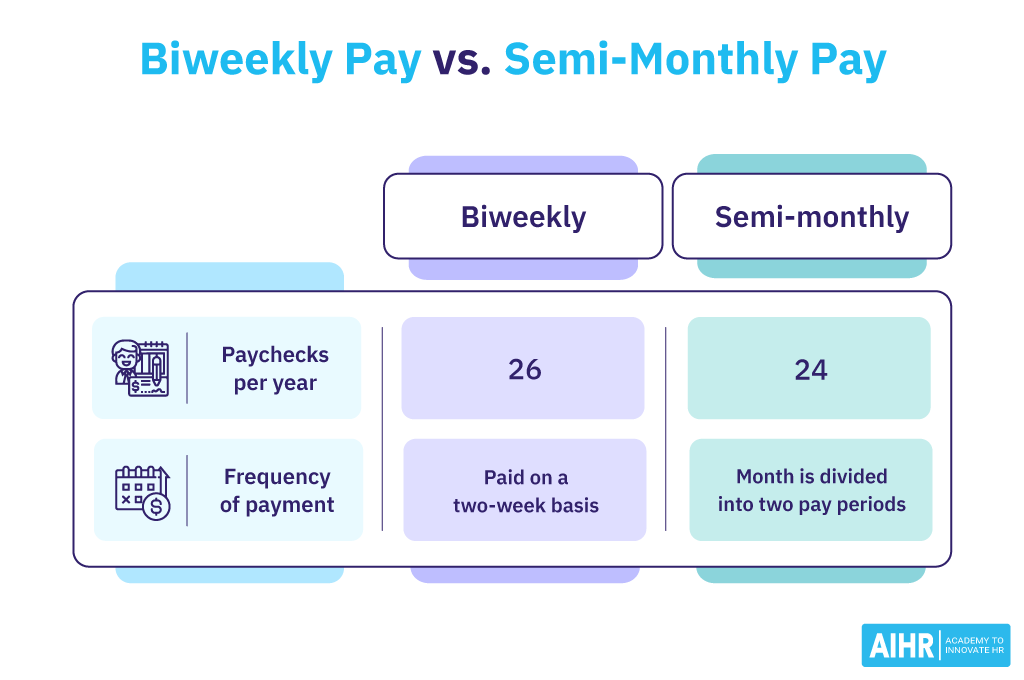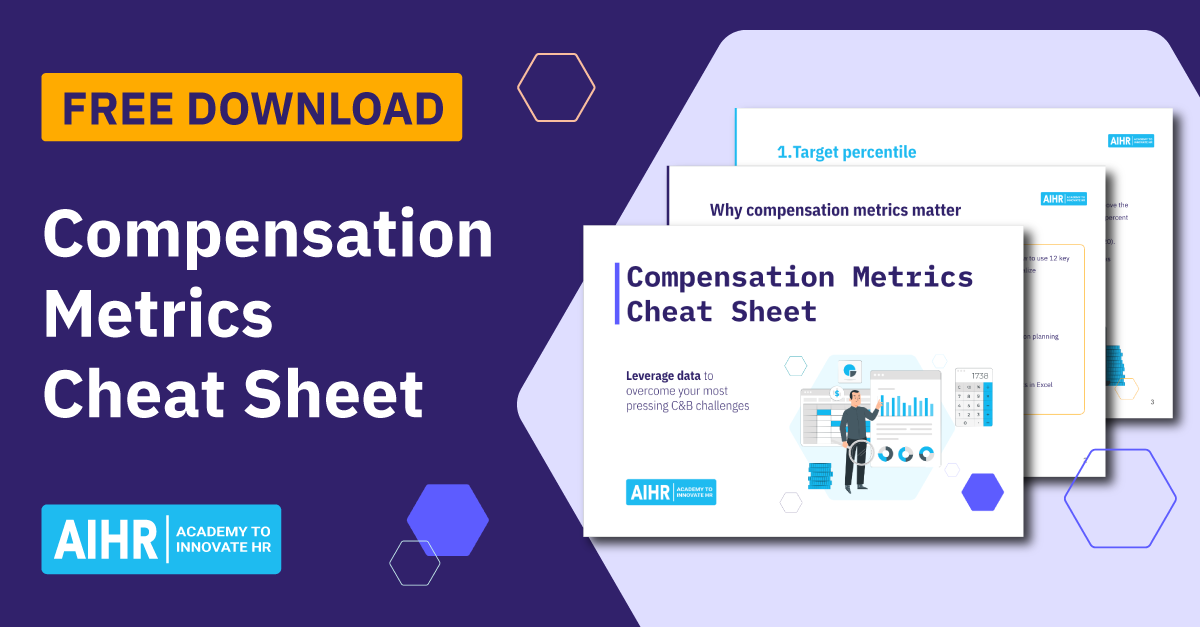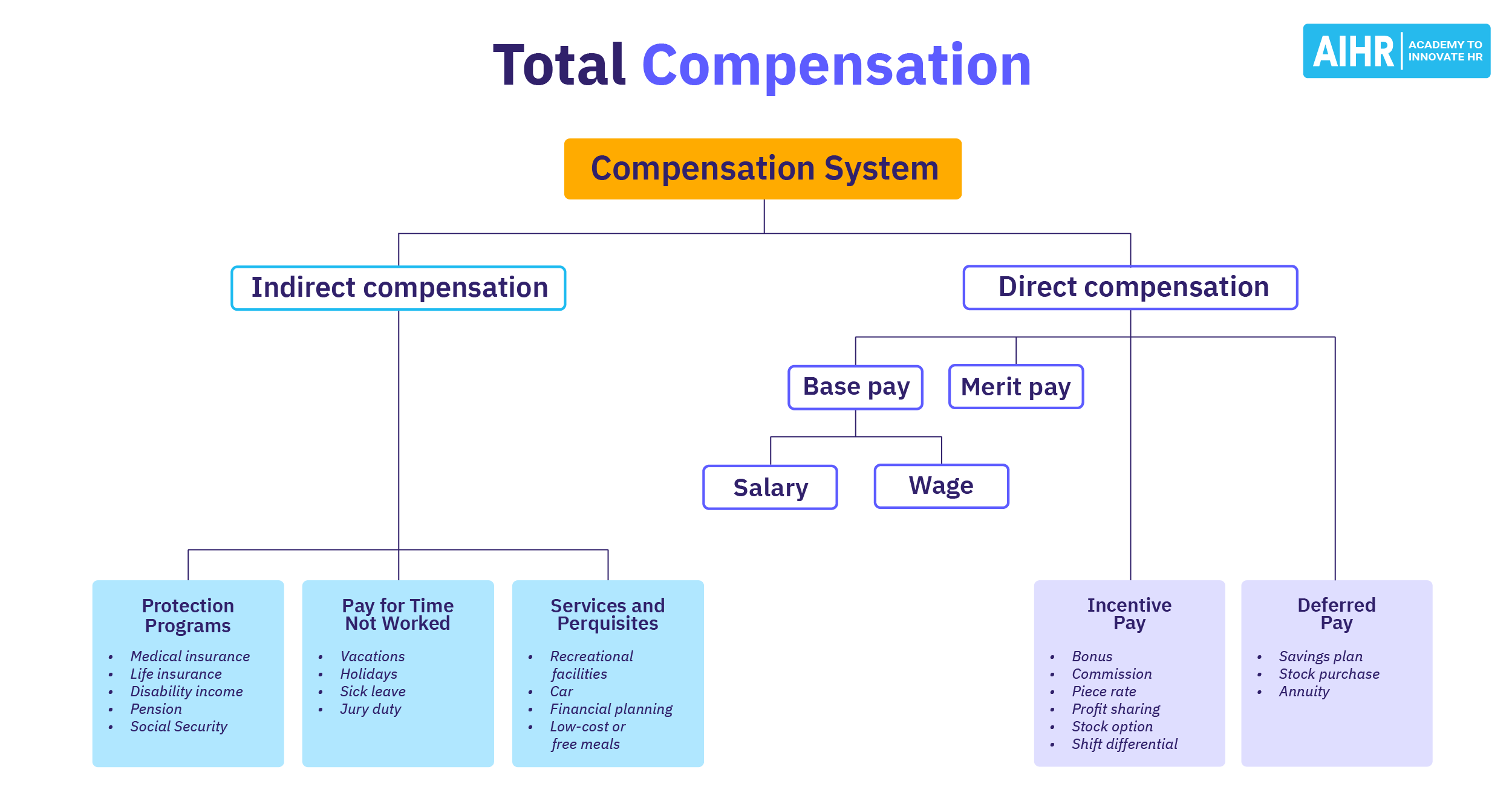Biweekly Pay
What is biweekly pay?
Biweekly pay is a method of payment where an employee receives their wages every two weeks.
Each pay period spans 14 days, consistently starting and ending on the same days of the week. This results in approximately 26 pay periods per year, with slight variations due to the calendar year not aligning perfectly with these periods.
During each 14-day pay period, all hours worked by an employee are recorded and paid out the following week. Overtime is tracked weekly, typically at the start of the pay period.
How does biweekly pay work?
Once the payroll period has ended, the payroll practitioner will determine the total payments each employee is due, as well as any necessary withholdings for state and federal taxes, insurance premiums, or any other applicable deductions.
Employees then receive their pay by the end of the week following the close of the pay period. As there are 26 biweekly pay periods in a year, there will be two months when employees receive three payments.
Here’s an example of how a biweekly pay calendar might look:

What industries use biweekly pay?
More than 40% of U.S. businesses pay their employees biweekly. According to the Department of Labor (DOL), these are the industries that most commonly use this schedule:
- Education and health services: This sector has the highest usage, with over 63% of businesses paying on this schedule. This category includes educational institutions, hospitals, and healthcare providers.
- Leisure and hospitality: Biweekly pay is also very common in this industry, with 54.9% of establishments using this pay frequency. This industry includes hotels, restaurants, and entertainment businesses.
- Professional and business services: Around 42% of firms in this sector, which covers legal, consulting, and other professional services, use a similar pay frequency.
- Financial activities: Approximately 37.4% of businesses in this industry, which includes banks, insurance companies, and real estate firms, utilize biweekly pay schedules.
How to calculate biweekly pay
To calculate biweekly pay, start by documenting and tracking all hours an employee has worked within the defined start and end times of the pay period. This can be done through timesheets or other tracking methods, such as punch cards or automated systems.
Once the hours are recorded, multiply the total hours worked by the employee’s hourly pay rate to determine the regular wages due for that period. If an employee works over 40 hours in a week, calculate the overtime separately, as it is typically paid at a higher rate (time and a half or 1.5 times the regular hourly rate).
Calculation example
Suppose an employee earns $20 per hour.
Week 1:
Regular hours: 40 x $20 = $800
Overtime hours: 10 x ($20 x 1.5) = $300
Total: $800 + $300 = $1,100
Week 2:
Regular hours: 30 x $20 = $600
Total: $600
Week 1 + Week 2 = $1,100 + $600 = $1,700
$1,700 is the amount the employee would be paid for the entire two-week period.
Semi-monthly versus biweekly pay periods
While biweekly pay means paying employees every two weeks, semi-monthly pay divides each month into two periods, usually from the first through to the 15th and then from the 16th through to the end of the month.
However, there is also a variant where the first period is defined from the first through to the midpoint of the month (say, the 14th of February), then from the next day through to the end of the month.
In practice, there are 26 biweekly pay periods in a year and 24 semi-monthly pay periods.
Although manually defining pay periods in this manner may involve more work, it also leads to more consistently sized payments for the employee.
If employees frequently work more than 40 hours a week, they may need to be educated on how the overtime week is calculated, as it is always done using the same days of the week (e.g., Monday through Sunday) and the calendar days the pay period covers have no bearing on whether they receive overtime pay.
Frequency
Every two weeks (26 times a year)
Twice a month (24 times per year)
Common paydays
On a specific day of the week (e.g., Friday)
Often on the first and the 15th or the 15th and the last day of the month
Month-to-month consistency
Paydays vary each month
Consistent dates each month (makes budgeting easier)
Extra paychecks
Employees get three paychecks during two months of the year, which can aid in budgeting
No extra paychecks; consistent throughout the year
Paycheck size
Generally smaller since payments are spread over more paychecks
Usually larger because there are fewer pay periods

Weekly vs. biweekly pay
Weekly pay provides 52 smaller paychecks a year, which can make managing weekly expenses easier and ensure consistent cash flow. This system benefits those who prefer regular income for ongoing needs.
In contrast, biweekly pay results in 26 larger paychecks, as each covers two weeks of work. While requiring careful budgeting due to the less frequent payments, biweekly pay may appeal to those who prefer managing larger sums of money.
Is weekly pay better than biweekly?
The choice between weekly and biweekly pay ultimately depends on individual preferences and financial habits. Those who need consistent cash flow may prefer weekly pay, while those comfortable with less frequent, larger payments might favor biweekly pay.
What HR should know about biweekly pay
HR should consider the following advantages and disadvantages of biweekly pay for both the organization and the employee:
Advantages for the organization
- Payroll is easier to manage, leading to lower administrative costs.
- More predictable cash outflows allow greater control over budgeting.
- More streamlined payroll processes with fewer manual entries and calculations needed between cycles.
Advantages for employees
- Receiving wages every two weeks can make it easier to handle bills and budget finances in the short term.
- Automatic deductions such as insurance premiums are taken care of each payday, reducing paperwork for employees who have multiple policies.
- Overtime calculation is more intuitive and easier to understand, compared to that of a semi-monthly or monthly pay period.
Disadvantages for the organization
- Payroll processing costs may be higher due to more frequent transactions.
- The end of the year will likely fall in the middle of a biweekly pay period, which can make yearly calculations beginning on January 1 complicated.
Disadvantages for employees
- Employees still receive payment less frequently compared to a weekly pay period.
- The uneven distribution of pay periods throughout the year may make budgeting challenging for employees, as they may rely on the “three-pay period month” to be in the clear.
Biweekly best pay practices
When an organization is considering implementing biweekly payments, there are a few things they should take into account.
The first is to inform employees of the change. Employees should be made aware of the advantages and disadvantages associated with biweekly pay periods before payroll processing begins. This will allow you to address any questions or concerns upfront and help foster trust between employer and employee.
Additionally, when informing employees of the change, it is important to clearly explain the benefits of biweekly payments and create a list of frequently asked questions to help address any concerns they might have.
You also want to ensure employees have as much advance notice as possible before you make any changes to pay periods so they can make any necessary changes in their finances to prepare for the switch.
FAQ
In a typical year, there are 26 biweekly pay periods. This is because employees receive a paycheck every two weeks, and there are 52 weeks in a year.
A biweekly pay period lasts 14 days and covers two full weeks of work. Employees receive their paychecks at the end of this two-week period.
No, biweekly pay does not get taxed more. The total amount of taxes you pay is the same, but the tax amount is spread across fewer paychecks, so each paycheck may show slightly more tax withheld compared to weekly pay.









